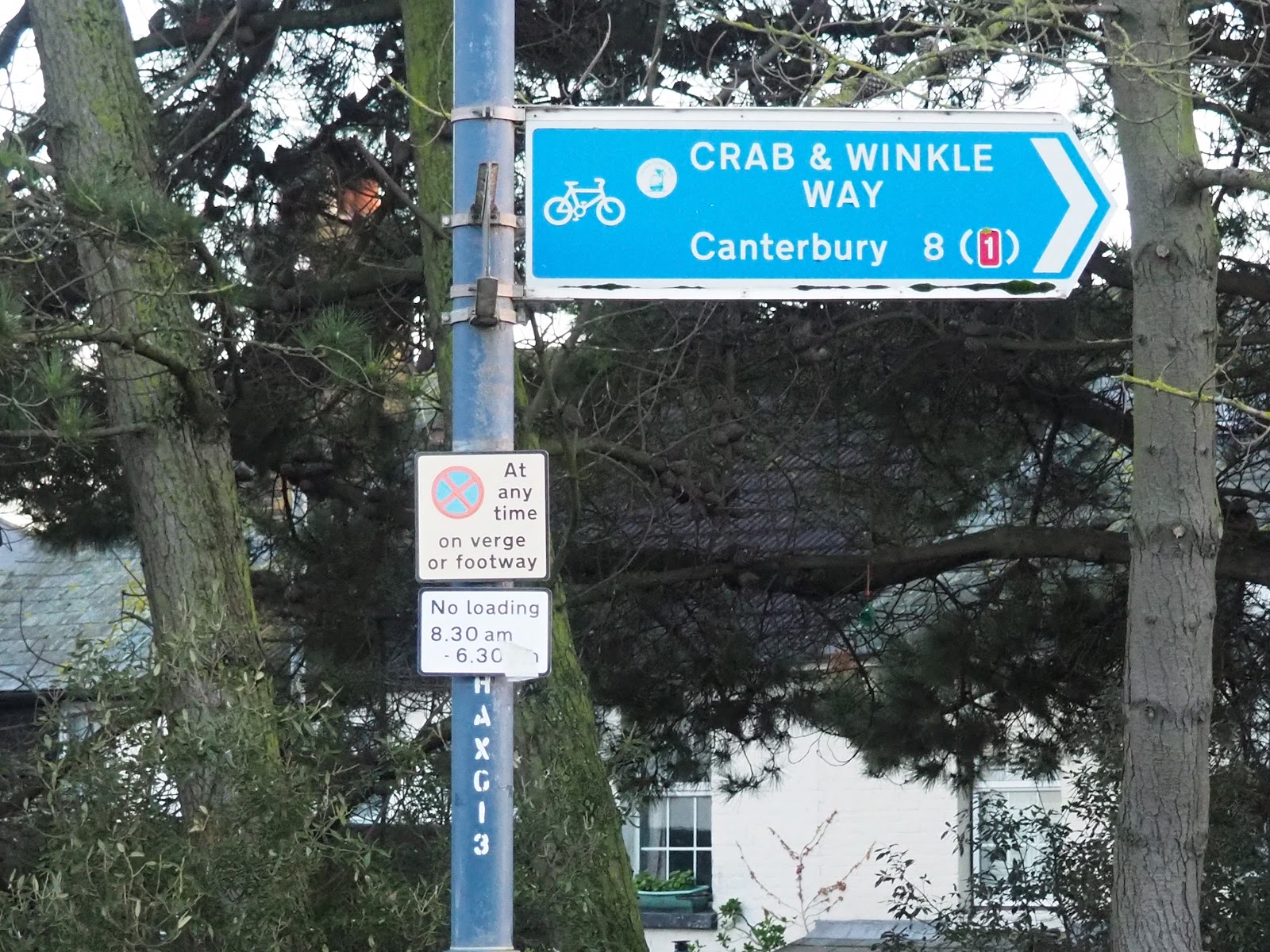 |
| Photo by Caroline Gannon |
Among the many things we discussed and agreed on, was that a large part of walking and drifting is about noticing. You walk, you see things, you record them in some way, in memory or a notebook or a photograph. and later, somewhere along the line, they become something else – a book, an essay, even a blog post.
After the event, the inamorata and I stayed in Whitstable for a couple of nights with pals Jacqueline and Nick (thanks kids), and it seemed only natural that we should all go for a walk and a drift Sunday morning and do some noticing. So that’s what we did.
And what did we notice? Well I noticed this sign:
I’m not sure that we actually walked along the Crab and Winkle Way – we certainly didn’t get as far as Canterbury - but we may have covered some small section of it
And I can’t speak for anybody else but one of the things I noticed was the the intersection of what we might call nature with what we might call the built environment.
We saw gardens including this one decorated with a stone bearing the message ‘One Who Plants a Garden Plants Happiness.’
Now you could argue that one who plants a garden is just as likely to plant frustration, disappointment and thankless labour, but I don’t want to rain on anybody’s gardening parade.
There was nature creeping up the walls of houses:
We even saw a couple of Nicholsons:
We saw some interesting ruin:
And we saw this classic VW bus – every drift is better when it includes a VW bus:
There was also this very noticeable mural of Somerset Maugham:
Now, I didn’t know that Somerset Maugham was a Whistable lad: he was born in the British Embassy in Paris. But after both his parents died he was sent to England to live with his uncle Henry MacDonald Maugham, vicar of Whitstable.
You know it’s a good while since I read any Somerset Maugham – I think the last book I read was Ashendenwhich I really enjoyed, so Maugham is definitely all right with me, but even so, from what I know of his life, I think perhaps he found some forms of solace even more supreme than writing.










































